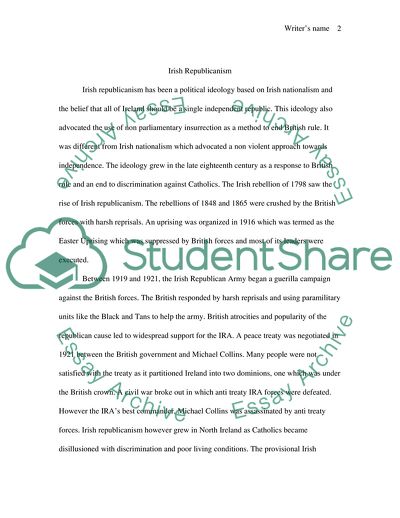Cite this document
(Irish Republicanism Assignment Example | Topics and Well Written Essays - 3000 words, n.d.)
Irish Republicanism Assignment Example | Topics and Well Written Essays - 3000 words. https://studentshare.org/politics/1713157-to-what-extent-did-the-ideas-and-actions-of-militant-republicans-remain-constant-between-1868-and-1998
Irish Republicanism Assignment Example | Topics and Well Written Essays - 3000 words. https://studentshare.org/politics/1713157-to-what-extent-did-the-ideas-and-actions-of-militant-republicans-remain-constant-between-1868-and-1998
(Irish Republicanism Assignment Example | Topics and Well Written Essays - 3000 Words)
Irish Republicanism Assignment Example | Topics and Well Written Essays - 3000 Words. https://studentshare.org/politics/1713157-to-what-extent-did-the-ideas-and-actions-of-militant-republicans-remain-constant-between-1868-and-1998.
Irish Republicanism Assignment Example | Topics and Well Written Essays - 3000 Words. https://studentshare.org/politics/1713157-to-what-extent-did-the-ideas-and-actions-of-militant-republicans-remain-constant-between-1868-and-1998.
“Irish Republicanism Assignment Example | Topics and Well Written Essays - 3000 Words”. https://studentshare.org/politics/1713157-to-what-extent-did-the-ideas-and-actions-of-militant-republicans-remain-constant-between-1868-and-1998.


